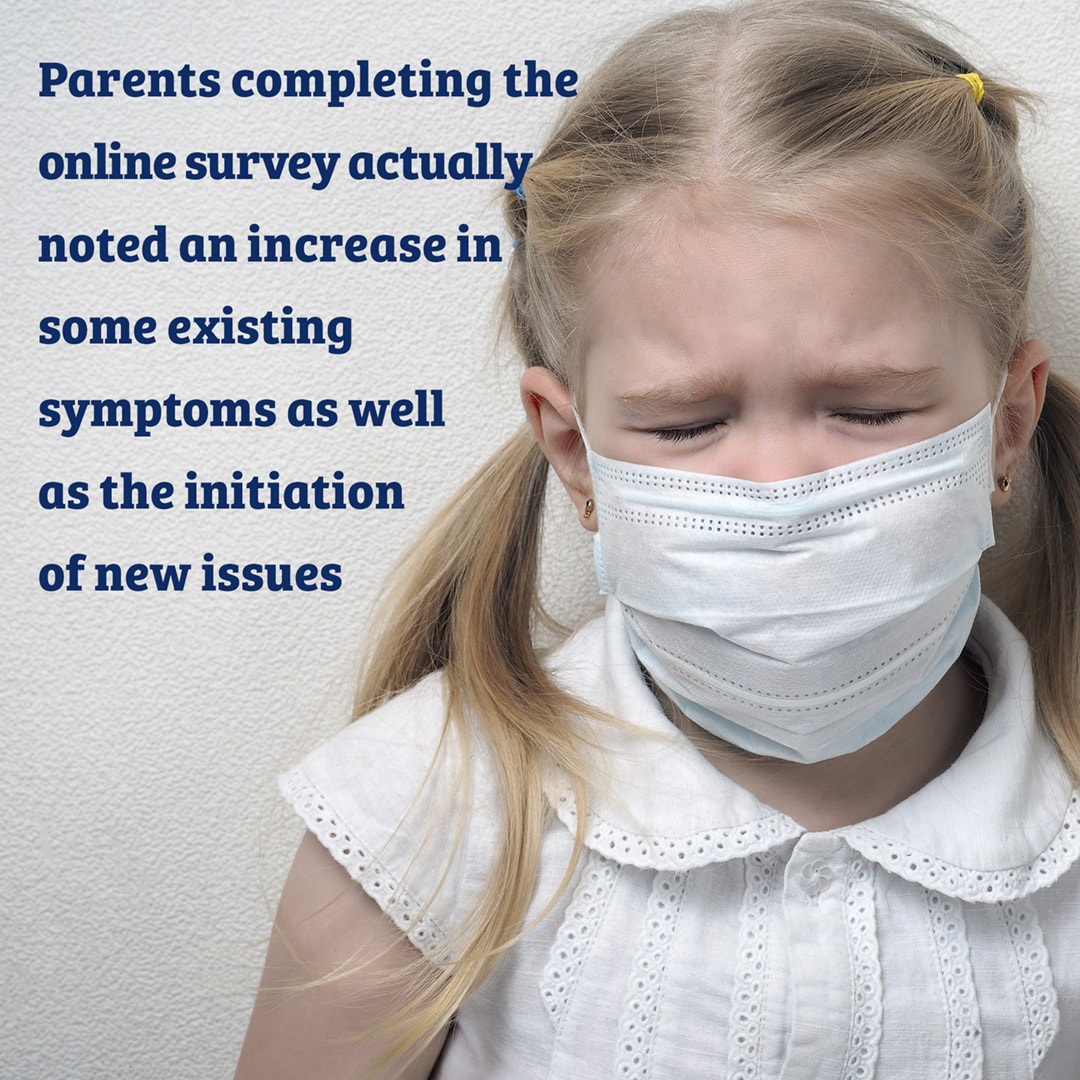And what do we need to do to help the most patients?PANS (Pediatric Acute Neuropsychiatric Syndrome) and PANDAS (Pediatric Autoimmune Neuropsychiatric Disorders Associated with Streptococcal Infections) are two neurological disorders most often affecting although not limited to children that until the late 1990s were thought to be purely psychiatric in origin. And unfortunately, this thinking has long impacted not only obtaining an accurate diagnosis, but also the subsequent appropriate treatment. As we see more and more (and more) patients with PANS or PANDAS, we wanted to take a closer look at some of the issues, the studies, and the recommendations for therapeutic measures as part of an integrative medicine approach that looks first at the root cause of the condition. Some history behind 20 years of research. The term PANDAS was coined in 1998 by Dr. Susan Swedo, principal investigator at the Pediatrics & Developmental Neuroscience Branch of the National Institute of Mental Health. It was during her study of pediatric obsessive-compulsive disorder (OCD) that she first noted what appeared to be a link between strep throat and a sudden onset of the disorder that included, among its numerous list of symptoms, tics and similar behaviors. Given that strep was known to cause complications in the heart, kidneys, and parts of the brain, Swedo’s team looked more closely at whether the infection could also incite OCD- and Tourette-like symptoms as well. Subsequently, they named the condition PANDAS, distinguishing the condition’s streptococcal origins and in 2010 added the diagnosis of PANS, the broader category of sudden-onset symptoms in the absence of streptococcus bacteria.1 There have been countless studies that have shown how appropriate PANDAS and PANS treatments can dramatically help these children. The key word is “appropriate”; because so many patients are not correctly diagnosed or treated, there is a great likelihood that they may end up with chronic neuropsychiatric symptoms, cognitive impairment and sometimes the development of another autoimmune disease. What changed how we think about these disorders?  According to an article published on Stanford Medicine, it was the 2007 discovery of a molecular explanation for some cases of autoimmune encephalitis (AE) that helped convince the medical community to look for an autoimmune connection when patients suddenly seemed to “go off the deep end.” As this article details, in the disease known as anti-NMDA receptor encephalitis, an antibody made by the patient’s own immune system attacks a receptor for a single neurotransmitter, N-methyl-D-aspartate, producing psychiatric and neurologic disturbances. These could initially present as anxiety, paranoia and/or hallucinations, followed by movement disorders and seizures. In the very worst cases, patients can develop an irregular heartbeat and respiration, go into a coma and even die. But an expedited and accurate diagnosis as well as treatment have the potential to reverse all of these negative impacts. The 2012 book and 2016 Netflix film, Brain on Fire, describes Susannah Cahalan’s own bout with the disease as it also helped raised awareness. Initially severely debilitated by the hallmark symptoms of AE, Cahalan made a full recovery, returning to her job as a reporter and becoming an advocate for other AE patients. Read more about the research that shed light on PANS and PANDAS diagnoses: https://www.suzannegazdamd.com/blog/new-research-moves-pans-and-pandas-out-of-the-shadows-of-mental-illness But we have to ask – why should it have taken so very long for these disorders to be properly recognized? And what would we have done were it not for a streaming service that finally brought this to the forefront of our attention and our actions? While PANS and PANDAS are typically clinical diagnoses, testing for autoimmune titers directed against neuronal targets is proving to be an enormous boon in making an appropriate diagnosis. The Cunningham Panel™ by Moleculara Labs is a blood test “which measures the levels of circulating autoantibodies associated with certain neurologic and psychiatric symptoms. Elevated levels indicate that symptoms may be due to an infection-driven autoimmune problem, rather than a neuropsychiatric disorder.”2 Yet despite all the science brought forward over the last two decades and even in the wake of a “pop culture” awakening, there are still too many doctors that cannot accept these diagnoses as valid medical disorders. This is not intended as a condemnation or criticism; rather, it is simply verbalizing what we have heard from far too many parents who have been told their child is “mad”, that they are fabricating their symptoms - or that the child just needs stronger psychiatric medications, which we know can make things worse. Some parents even have found themselves dealing with the ramifications of neglect accusations and social services investigations. It’s not just heartbreaking, it is incredibly unfair. As if watching their children suffer and dealing with the effects of the disorders isn’t hard enough, to be unjustly accused because medical practices have failed these families is just plain cruel. Root causes and why we look for these  I often use the analogy, “imagine you come home and there is a fire in your kitchen. You quickly extinguish the flames, but each day this happens again and again. Eventually you are going to have permanent damage in your kitchen and probably throughout your house. So it stands to reason that you must find the CAUSE of the fire in order to ultimately solve the problem and protect your house.” In the case of our PANS and PANDAS patients, the kitchen is the brain and the risk to the entire system, or the house, is obviously much greater if that fire in the kitchen isn’t quickly extinguished. With ongoing systemic and neuroinflammation, in order to heal both the brain and the body we have to look for the root causes that can include: Underlying infections. PANS and PANDAS are infection-induced autoimmune conditions that disrupt a patient’s normal neurologic functioning, resulting in a sudden onset of OCD and/or motor tics and a number of other symptoms that you can read more about here in our previous article. The infectious agent is not always streptococcus - biotoxins such as chronic Lyme and are also implicated, but the resulting inflammation from the infection can subsequently damage tissue and organs including the brain. The number of people suffering from autoimmune diseases is estimated at 24 to 50 million Americans, representing 16% of the U.S. population...meaning that autoimmune disease prevalence equals that of heart disease and cancer combined.3, 4 Traumatic brain injury (TBI) can contribute to the root cause of a large number of neuropsychiatric problems and neurodegenerative diseases. Medications. Psychiatric medicines prescribed in PANS and PANDAS either are not effective or can make symptoms worse; the medications may seem to reduce symptoms, but they don’t bring about true resolution of the condition. Genetic predisposition. Some patients may have a genetic vulnerability to autoimmune-driven and other diseases. In fact, many PANS and PANDAS children have a family history of autoimmune disease.5 Environmental factors. More studies have suggested that exposures to environmental chemicals can contribute to the pathogenesis of neuropsychiatric abnormalities. This is a complicated and emerging field, but the role of genetics and epigenetics is clearly unraveling the neurobiological mechanisms in every neurodegenerative disease. Performing a careful intake history of environmental exposure both pre- and post-birth that also looks at the possible exposures of the parents is particularly important.6 We’ve written on numerous occasions about the impact of environmental risks to our brain and general health and looked at the interplay of these factors in combination with genetics and epigenetics in other neurological diseases as well such as autism and Nodding Syndrome. Nutrition, diet and the microbiome. There no debating the importance of the gut-brain connection and the huge importance of a healthy microboime for immune health.7 This is especially true for PANS and PANDAS patients as food sensitivities are often problematic and can significantly contribute to neuroinflammation. As part of any integrative protocol, it’s critical to institute measures to heal the gut starting with making the right food choices that emphasize fresh, whole foods, avoidance of processed “junk food”, and more. We'll explore in more detail the research regarding gut microbiota, balancing brain biochemistry through food as medicine and diets in an upcoming blog so please check back for this next piece. Emotional Trauma A PANS or PANDAS diagnoses is certain to impose on both the children and their families a significant burden of emotional trauma. Regardless of how long a child has been ill or how many doctors may have been consulted before an accurate diagnosis is made, these disorders are extremely impactful to emotional and mental health, which must be addressed as part of a comprehensive approach.  Brain areas implicated in the stress response include the amygdala, hippocampus, and prefrontal cortex and we know that traumatic stress can be associated with lasting changes in these brain areas.8 Additionally, we know that trauma can be essentially “handed down” to anyone with whom a patient may regularly come into contact. So it’s important to note that the children as well as parents, siblings, extended family and their community of friends, teachers and others all may need appropriate counsel.9 Strategies and measures for addressing emotional trauma in PANS and PANDAS will be discussed at length in a new article coming soon so please be sure to check back for this update by guest author, Dr. Ilene Rusk. An excellent piece by Odelya Gertel Kraybill Ph.D. also offers ways to help children and teens with PANS or PANDAS, autism and similar disorders whose cognitive processes simply won’t respond to approaches that might otherwise work to diffuse a tantrum or meltdown with children who have no diagnosed condition. Instead, Dr. Kraybill writes "we need to intervene with strategies for calming a child’s nervous system and building an interpersonal attunement with the child (parents-child, and or therapists-child). This work must be done in ways that enable the calming of the nervous system reactivity. Once that is accomplished, we can proceed to re-engage the upper brain and strengthen its functioning, and cognitive and behavioral methods have a useful role to play in this.” An integrative perspective. It is rarely one thing that brings down the body or the brain and just as rarely will the cure be any one simple thing, particularly in diagnoses that present with an extraordinary array of symptoms and may be different from one patient to the next. Every presentation of PANS and PANDAS is unique and have become increasingly more complex than I’ve seen in my prior 30 years of practice. I truly believe this is because we are living with the culmination of years and years of exposure to a frighteningly toxic world, combined with the negative influences from often unhealthy lifestyles. But I also believe that through the foundation principles of integrative medicine, we can provide healing and hope for the children and the families affected by these diagnoses. In health and with hope, Dr. Suzanne Gazda Be sure to check back in our regularly update blog section for more articles that address the many aspects of PANS and PANDAS as well as the latest news! References: 1 Undark.org https://undark.org/2017/03/22/doctors-divide-on-pandas/ https://undark.org/who-is-undark/ 2 The Cunningham Panel and Moleculera Labs https://www.moleculeralabs.com/cunningham-panel-pandas-pans-testing/ 3 Tincture.io https://tincture.io/an-invisible-epidemic-when-your-body-attacks-itself-autoimmune-disease-5738b699de12#_edn15 4 National Institutes of Health https://www.nih.gov/news-events/news-releases/autoimmunity-may-be-rising-united-states 5 NDNR.com (Naturopathic Doctor News & Review) https://ndnr.com/pediatrics/genetics-pandas-a-review-of-the-mannose-binding-lectin-2-gene-polymorphism/ 6 Hollander, J.A., Cory-Slechta, D.A., Jacka, F.N. et al. Beyond the looking glass: recent advances in understanding the impact of environmental exposures on neuropsychiatric disease. Neuropsychopharmacol. 45, 1086–1096 (2020). https://doi.org/10.1038/s41386-020-0648-5 7 Does all disease begin in the gut? https://www.suzannegazdamd.com/blog/does-all-disease-begin-in-the-gut 8 Bremner J. D. (2006). Traumatic stress: effects on the brain. Dialogues in clinical neuroscience, 8(4), 445–461. 9 Psychology Today https://www.psychologytoday.com/us/blog/expressive-trauma-integration/202010/when-must-kids-neuropsych-symptoms-see-neurologist Additional reading: You can also find more articles about PANS and PANDAS as well as a variety of patient resources on our website – just use the helpful “Search” bar located at the bottom of each page to find a specific topic or scroll through our Blog archives for a wealth of information! To learn more about Nodding Syndrome see: Hope for HumaNS https://www.hopeforhumans.org/ https://www.statnews.com/2019/09/26/nodding-syndrome-uganda-disabled-children/ Learn more about the effects of and how to protect your family from toxins and environmental risk factors: https://www.suzannegazdamd.com/scientifically-speaking1/neuro-degenerative-disease-and-toxins EPA.gov https://www.epa.gov/children/what-you-can-do-protect-children-environmental-risks
0 Comments
Your comment will be posted after it is approved.
Leave a Reply. |
AuthorDr. Suzanne Gazda, Integrative Neurology Archives
February 2024
Categories |

 RSS Feed
RSS Feed